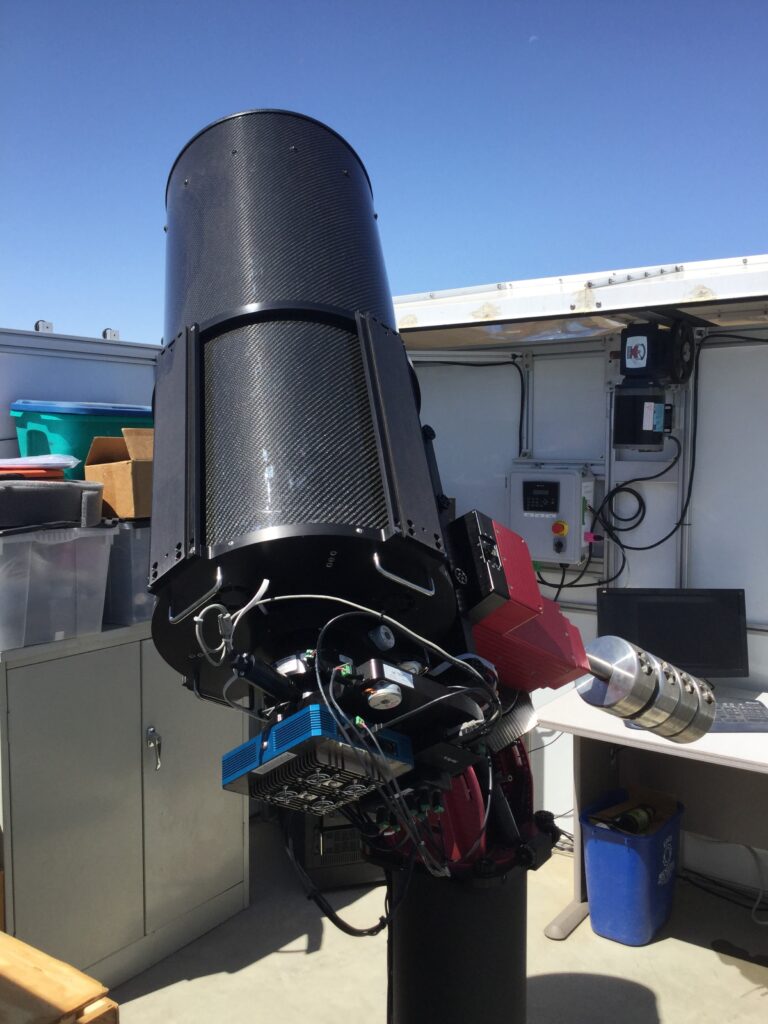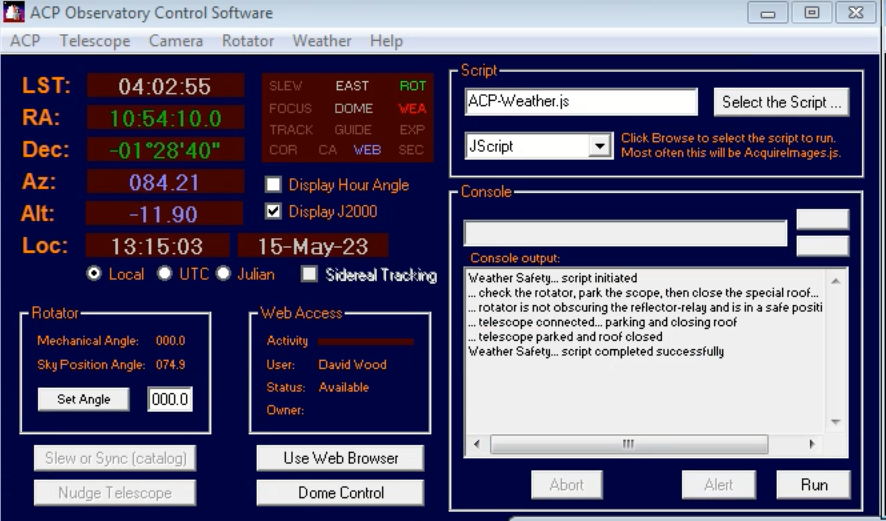
TARO Imaging System
TARO Equipment and Software
OTA: The primary telescope, a DSI RC14C, is built by Deep Sky Instruments. It is a 14.5 inch, F 7.0 Ritchey Chretiens reflector with a focal length of 2534mm. The optics are made of a quartz substrate for temperature stability and were hand figured by Paul Jones of Star Instruments. The optics are housed in a carbon fiber tube assembly that is constantly cooled by fans located in the rear of the scope, creating an air layer over the primary mirror. A unique feature of the OTA is the lightweight focus system that is part of the secondary mirror assembly mounted at the front of the scope, achieving focus by moving only the lightweight secondary mirror. This allows the optical train a solid, non-moving mounting structure at the rear of the OTA eliminating any possible flexure inherent in rear focus OTA designs. The added benefit of this focusing system is the very high accuracy and speed when focusing on an object.
Imaging components: The imaging system consists of a 3-inch Optec Rotator, a Starlight Express Adaptive Optics unit with a Starlight Express Loadstar off-axis guide camera, an Apogee 10 position filter wheel, and an Apogee Alta U16m CCD imaging camera. The camera contains a Kodak KAF 16803 16Mp CCD chip with an image size of 36.8mm x 36.8mm. The camera is typically cooled to -20c for imaging operations. The filter wheel contains 7 Astrodon II filters for broadband and narrowband imaging as well as 3 specialized Sloan filters for photometric imaging.
Mount: The telescope mount is a Software Bisque 1st generation Paramount ME, rated for a total payload capacity of 120 lbs. As the entire imaging train is mounted on an Optec rotator, the same guide star can be used for guiding when the telescope is located on either the east or west side of the mount.
Software: The primary automation software is ACP (Astronomers Control Panel) created by Bob Denny at DC-3 Dreams. This software package communicates with 3 other software packages:
- The Sky X Professional created by Software Bisque which interfaces and controls the mount.
- Maxim DL created by Diffraction Limited which controls the camera, filter wheel and the focusing system.
- FocusMax created by CCDWare which is interfaces with Maxim DL and is used for automated focusing.

ACP features automated weather monitoring, observatory building control, and automated observation and image scheduling. Other than target selection, filter selection and total imaging time per filter, no other input is needed to for image acquisition. As noted above, all images are automatically uploaded to cloud storage. Because of a proprietary algorithm used as part of ACP’s Scheduler, multiple targets can be imaged in one evening based on optimal sky location and filter selection. Also, a unique feature of the ACP automation software allows for both deep sky imaging and photometric observations on the same evening.
Custom scripts have also been created for ACP that allow for automated collection of flats, bias and darks for image calibration.
Observatory structure and weather reporting: The observatory building is a 10 W x 10 W Pier-Tech Telestation 2 roll-off roof observatory. The roof control system is integrated with ACP via ASCOM drivers which allows fully automated roof opening and closing. The Sky Alert weather reporting system is built by Interactive Astronomy and provides critical weather conditions for the ACP automation software. Typical monitored weather conditions are temperature, windspeed, cloud cover, and humidity. The Sky Alert systems reports either a “safe” or “unsafe” condition based on pre-programmed weather limits.
